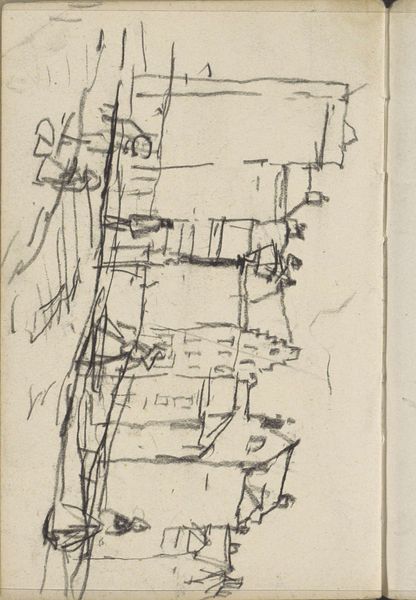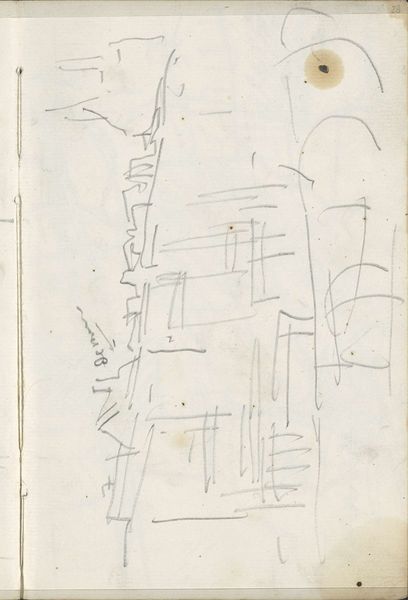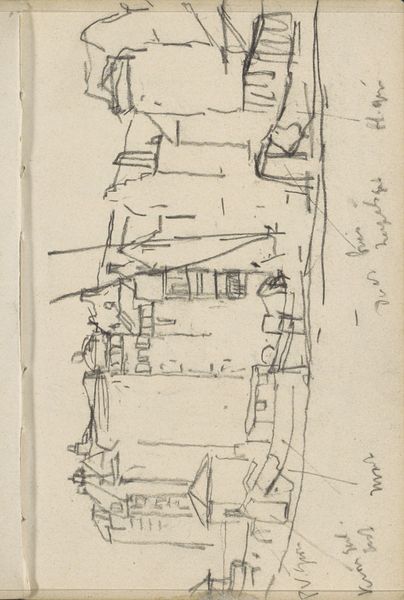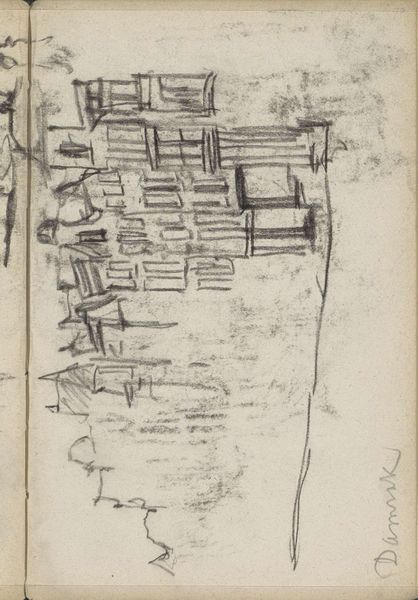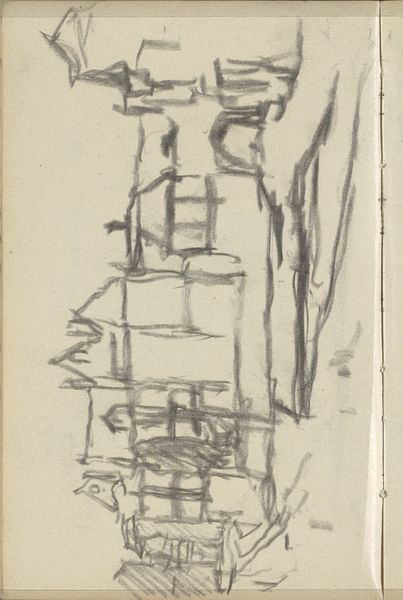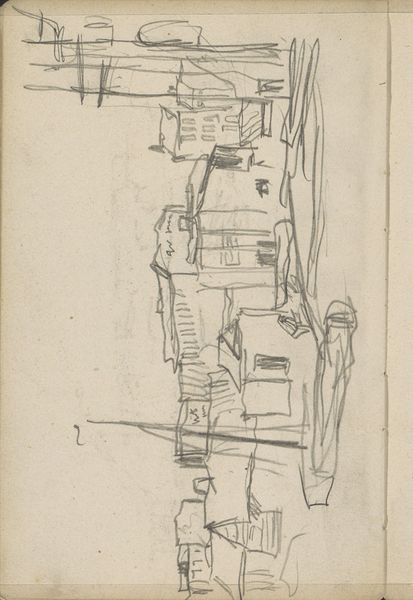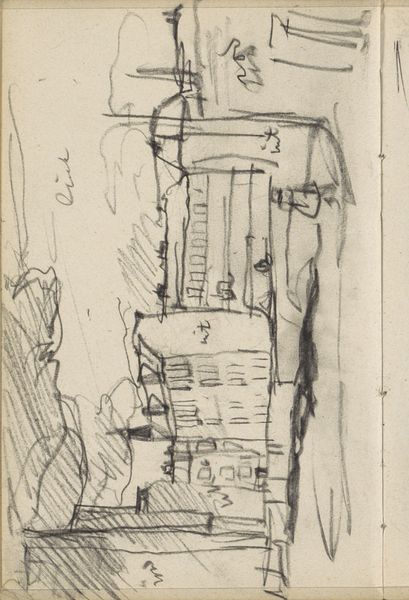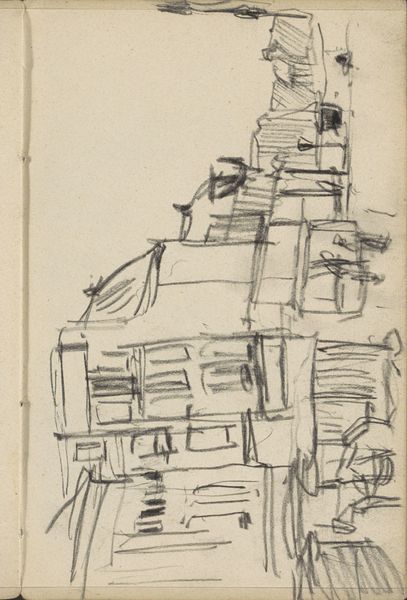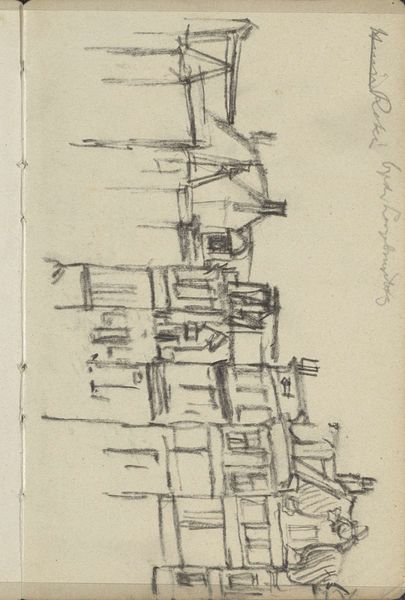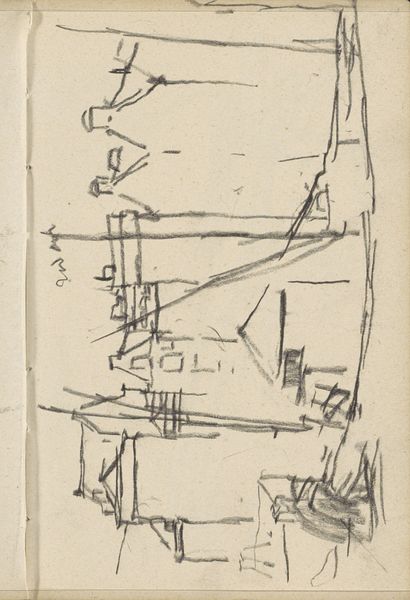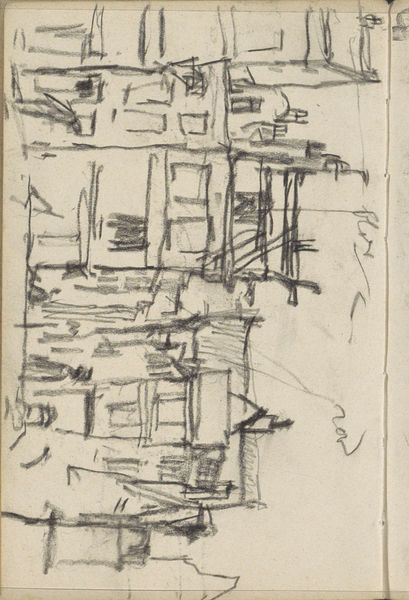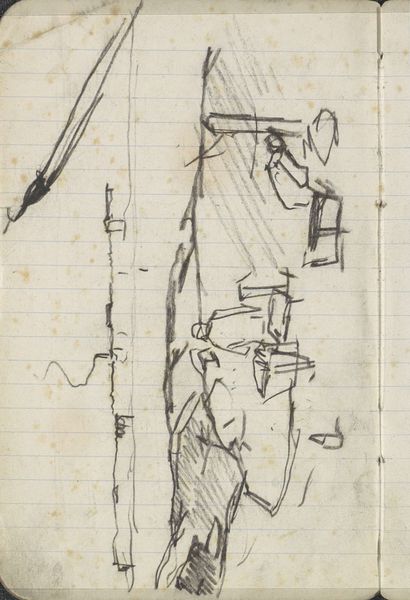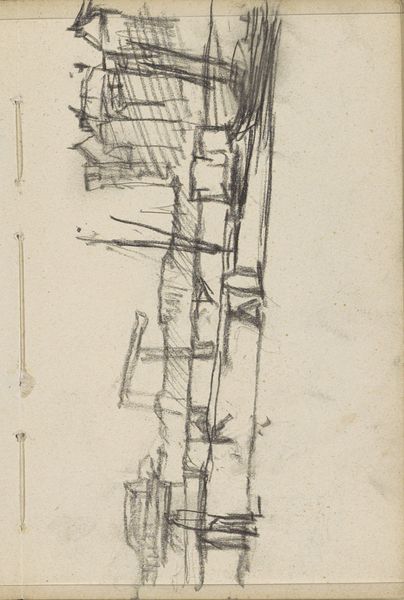
Copyright: Rijks Museum: Open Domain
Editor: This is "Buildings on the Water, Seen from a Bridge" by George Hendrik Breitner, made sometime between 1886 and 1898 using ink on paper. It feels incredibly raw and immediate, like a snapshot of a fleeting moment. What's your take on it? Curator: I see this as Breitner engaging with the burgeoning urban landscape and the rapid transformations occurring in Amsterdam during that period. His choice to depict this scene in a quick, sketch-like manner, speaks volumes. Consider the Impressionists’ focus on capturing modern life – how does this work fit, or perhaps challenge, that framework? Editor: I suppose it fits because it's about everyday life in the city, but it's not pretty in the way I think of Impressionism being. Curator: Precisely! It's less about aestheticizing the city and more about documenting its raw energy and burgeoning industrialization. Think about the role of the bridge. How does its inclusion shape the viewer's perspective, both literally and perhaps, socio-politically? Editor: That’s interesting… being above it all, sort of observing, not participating? I hadn’t thought about the political angle. Curator: These burgeoning cities brought social stratification to the forefront. Artists often used vantage points, like bridges, to comment on that distance, on who had power and perspective. Do you see that in how Breitner renders the buildings themselves? Editor: The buildings almost seem like they're growing out of the water, a little chaotic and undefined. I suppose he could be making a comment on progress? Curator: It's a fascinating tension, isn't it? A negotiation between documenting progress and critiquing its impact. It's a good example of how the “sketch” becomes a vital way to respond to cultural shifts. Thanks! I learned something from that. Editor: Me too! It’s definitely changed how I look at Impressionism and its connection to social issues.
Comments
No comments
Be the first to comment and join the conversation on the ultimate creative platform.
